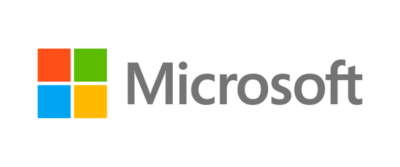Every company is vulnerable to cyber-attacks. That’s why it is important to learn more about it and follow the best practices in your company to lower the risks. Web security problems come in many types and affect all industries that use digital information. A well-known example is “ransomware” attacks, where hackers try to get money from the victim in exchange for a code to get back into their system.
With cybersecurity being such a vast field of knowledge, knowing how to protect yourself against cyberattacks may seem confusing. To avoid falling victim, it is crucial to stay informed and take proactive measures. In 2022, the Canadian Anti-Fraud Centre successfully recovered over $2.88 million for victims, highlighting the substantial impact of cyberattacks.
In Canada, the most usual type of attack is called phishing or a “phishing scam.” This method involves sending a link (which could also come through phone calls or text messages) to trick the person into paying and sharing personal and financial details. As per the Canadian Anti-Fraud Centre’s info, there were 70,878 reported frauds in 2022, resulting in a theft of over 530 million dollars.
First Steps Towards A Secure Architecture
Like any IT project, tackling the entire architecture and trying to handle everything at once can be a rather daunting experience. Consequently, the preferred approach is to aim for the smallest step first, one that will add value quickly, rather than conceptualizing a complex project for several months without action. This is why we start with the minimum required and refine security progressively. Obviously, the complexity of the security implemented will need to be adjusted according to the level of criticality of the data collected and the rules governing its retention.

Overcoming Weak Password Vulnerabilities
As you know, a relatively simple password can represent a major security threat to your company. The following tools and best practices can assist you in establishing an effective password policy:
- Password Manager: Implementing a password manager allows your employees to securely store their passwords in a dedicated vault. This facilitates secure sharing with authorized personnel, eliminating the reliance on less secure methods like text messages or email.
- Complexity and Password Policy: Encourage diverse passwords across your employees’ application accounts. Emphasize the use of passwords with a minimum length of 8 to 12 characters, including at least one capital letter, one number, and one special character. Implement settings to prevent the reuse of old passwords within your systems. Additionally, raise awareness among your employees about the significance of their password choices and provide easy access to a password manager. You also have the flexibility to enhance the policy by introducing a mandatory frequency for password changes, for example.
- Two-Factor Authentication: Implementing double authentication enables users to verify their identity on an additional device, like their cell phone. The first factor involves traditional authentication (email and password), while the second factor entails the use of a key or biometric confirmation, such as a fingerprint. At Uzinakod, our team members use the Devolutions application to store all their passwords and also employ two-factor authentication for enhanced security.
- Training and Awareness: The key priority is to educate employees about cybersecurity incidents and their potential impact.
The Role of Software Updates to Strengthen Cyber Defence
Ensuring the ongoing security of our company’s systems and software architectures relies on regular updates. When a security vulnerability is discovered and addressed, it is rectified through updates. Neglecting these updates is equivalent to leaving a door wide open for hackers to infiltrate your systems, significantly increasing the risk of data theft or account compromise. It is recommended to mandate that employees perform updates within a specified timeframe following the deployment of an operating system or computer component update.
Strategies for Business Continuity After a Crisis
Given that it is impossible to completely eliminate the risks of a cyberattack, it is important to have a strategy for business continuity in place. The first step is to familiarize yourself with the industry standards to be met, such as ISO 22301. Next, identify the employees who will be involved in its development, including a representative from each department to catalog all applications used within the company.
After listing the systems, analyze by looking at how backups are done, how often the systems are used, their connections to other systems, and where the data comes from. Subsequently, it becomes essential to assign a criticality level to each system, facilitating prioritization for their restoration, along with evaluating an acceptable downtime and backup frequency. The final step involves creating the redundancy infrastructure and conducting regular tests on the recovery plan.
Cloud Restauration with Azure’s Site Recovery
When considering redundancy, our minds often go to physical locations like server rooms. However, this isn’t always the most budget-friendly solution. When our systems reside on a cloud infrastructure, such as Azure, disaster recovery becomes both rapid and cost-effective. Azure introduces a dedicated disaster recovery service known as ‘Site Recovery,’ providing a seamless and efficient solution.

This ease of deployment eliminates the need for costly additional physical infrastructure. With Azure Site Recovery, creating a redundant site is achievable in a matter of hours rather than days.
- Redundancy: Preserve the availability of your applications in the event of a disaster by automatically recovering an Azure site in another Azure region. Comply with ISO 27001 by enabling site recovery between separate Azure regions. Additionally, you may only pay for the use of the redundant site, rather than bearing the costs of a permanent infrastructure.
- Automatic Updates: Benefit from the latest Azure features immediately upon release, as ‘Site Recovery’ is automatically updated.
- Testing: Evaluate your disaster recovery plan without affecting production workloads or end-users.
Extended Cybersecurity Capabilities on Azure
It is important to address Distributed Denial of Service (DDoS), a cyber attack form that overwhelms system resources to make them inaccessible to legitimate users. All publicly accessible web platforms can be vulnerable to this type of attack.

- DDoS Protection Mechanisms: Azure provides essential features for protection against DDoS attacks, including analytics, metrics, and alerts that allow us to profile network activity. The network is actively monitored 24/7. The platform offers multi-layer protection at both the network and application levels, incorporating a Web Application Firewall (WAF). DDoS protection mechanisms are specifically designed for services deployed within a VNet virtual network.
- VNet Network Security: Facilitates the creation of a secure private network for hosting our systems. Key features of an Azure virtual network include traffic filtering (e.g., denying specific IP address ranges), seamless communication with other Azure services within the same network, the option to connect to another virtual network (virtual network peering), and traffic redirection to a subnet (e.g., based on their country).

Practical Strategies for Strengthening Cybersecurity
Cybersecurity continues to be a critical concern for companies of all sizes and across various industries. The risks linked to cyber attacks are diverse, spanning from phishing to SQL injection, with potential serious consequences for data confidentiality and integrity.
In light of this reality, it is important to take proactive measures to strengthen your company’s resilience. The tips discussed in this article, covering aspects from password management to the establishment of business continuity plans, provide a comprehensive approach to minimizing the risks and costs associated with cybersecurity incidents. Through adopting a gradual strategy, increasing employee awareness, and using technological tools, your company can strengthen its defenses against cyber attacks.
Do you have a project in mind? Contact us to discuss it further!
To report a cyber attack, contact the Canadian Anti-Fraud Centre today.




